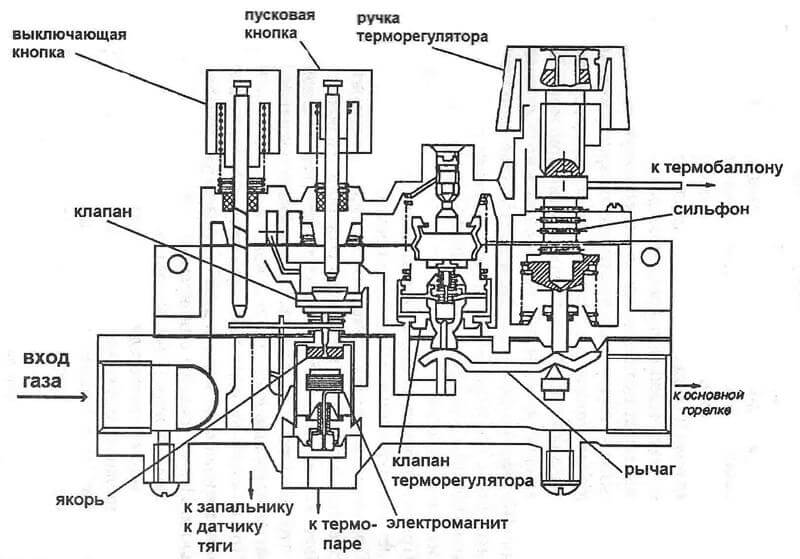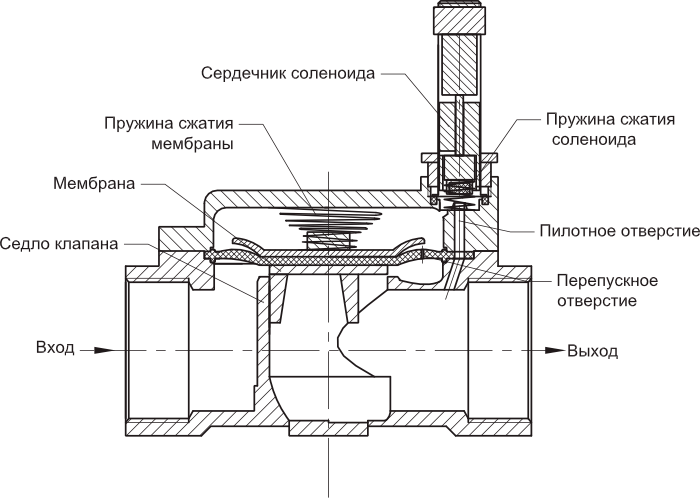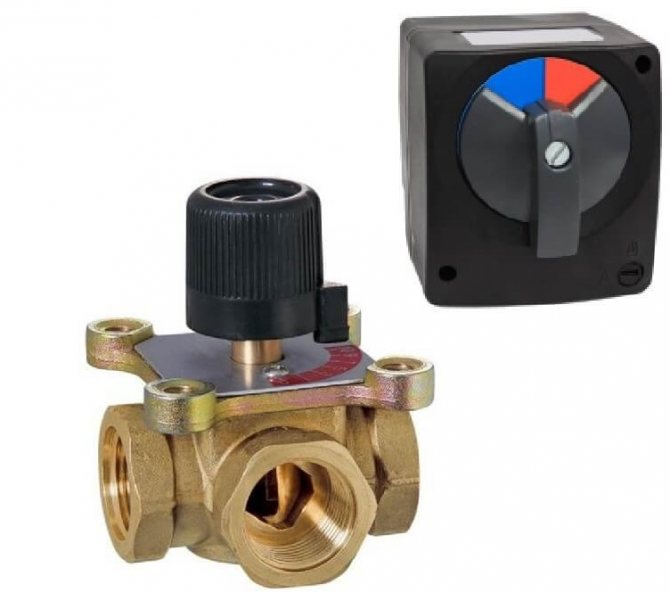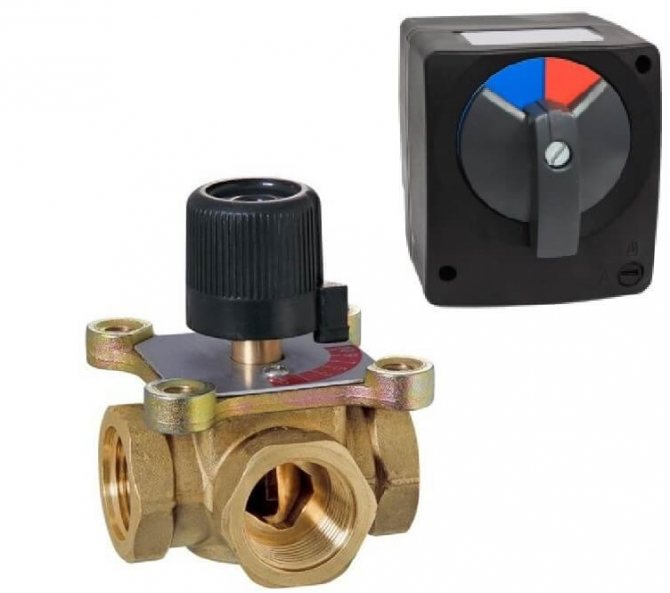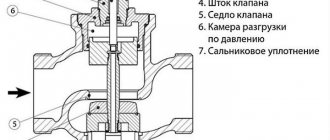Home / Gas boilers
Back to
Published: 13.11.2019
Reading time: 5 min
0
1021
The gas valve is required to organize the fuel supply system to the boiler gas burner device. This allows it to operate in an economical mode with high power, guaranteeing safe operation and automatic control of heat engineering processes.
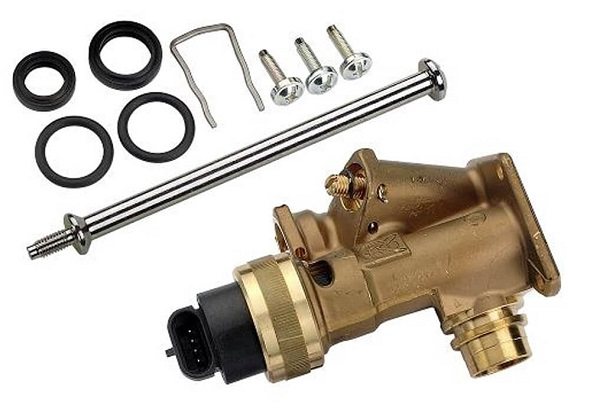
Photo source: ulyanovsk.santechsystemy.ru
This device is operated with increased load, since it constantly operates in tandem with a heat source, therefore its parts and assemblies are subject to wear and require periodic repair and maintenance. A simple repair of a gas boiler valve can be done independently at home.
- 1 Varieties of valves in a gas boiler
- 2 Valve design 2.1 Principle of operation
- 4.1 Checking electrical components
Gas heating boiler automation
Modern heating devices using natural gas are high-tech and safe thanks to the introduction of automatic control and monitoring systems.
Automatic tracking systems improve equipment efficiency while providing ease of use that does not require constant human monitoring.
The boiler automation is conventionally divided into volatile (electronic) and non-volatile (mechanical).
The principle of operation of a gas boiler is simple. When gas is supplied, the electronic ignition device is triggered. The wick lights up, which then burns constantly - the automatics will not supply gas if it does not burn.
It ignites a burner - a heating device. The burner heats the heating medium (water) to the required temperature. As soon as the water heats up, the automation turns off the burner. When the water temperature drops, the thermostat will give a signal to the valve, and gas will begin to flow. The burner will start again and so on.
Today, heaters receive systems, the list of functions of which includes automatic provision:
- Security.
- Continuity - automatic on and off.
- Management by various criteria - by time, temperature throughout the day and other parameters.
The components, the automation device and the set of sensors of the boiler are different, but in any case they meet the basic requirements for reliability and safety. They are divided into several element groups that perform various functions and are present in one form or another as part of the control systems for gas heaters for various purposes:
- Gas fittings.
- Valves.
- Gas and water pressure switch.
- Thermostat. A room thermostat can be included in the circuit.
- Controller.
- Water presence sensor.
- Traction sensor.
- Programmers (daily and weekly, including wireless)
Gas fittings
With the help of gas fittings or devices that process the execution of the command of the control circuit, the processes are regulated - starting and stopping the boiler, changing the flow rate and direction of the gas flow, the power of the heater. But the main purpose is work safety.
- Locking. Includes dampers, various valves and taps. The connection is made with flanges, couplings and unions.
- Regulatory. To correct the flow rate by changing the flow area. This includes mechanical and electronic valves.
- Safety. This equipment includes shut-off and safety valves.
- Emergency.This includes shut-off valves that shut off the fuel supply.
The main function in a gas heater is to open or close the fuel supply to the burner.
Any heater is designed for a specific working gas pressure. A deviation from the norm will lead to a drop in performance or burnout of the case.
In the event of a fall, the minimum gas pressure switch comes into operation, turning off the boiler.
The limit value is adjusted during commissioning. It is mounted on the inlet line upstream of the control unit or upstream of the gas supply valve.
Minimum pressure switch
When the pressure rises, the maximum pressure switch comes into operation. The device prevents possible overheating and destruction of the burner. The connection is made in series in the same circuit with the previous relay.
The thermostat is considered one of the most complex devices in the automation scheme of a gas boiler. The main purpose is to maintain the set water temperature. Adjustable thresholds.
The draft sensor performs an important function - it monitors the process of exhausting combustion products.
If something goes wrong, for example, for some reason a back draft appears, it will cut off the gas supply to the burner. This is a vital element, as carbon monoxide poisoning occurs imperceptibly. Installed in the fume extractor above the boiler.
For cases of problems with the water supply, a minimum and maximum pressure switch is provided. Dangerously low blood pressure. It causes the water to boil and, as a result, leads to the ingress of air into the system and overheating of the boiler, with the ensuing consequences. To set the relay, use the minimum temperature values at which the functionality of the boiler is ensured.
The operation will resume only after the elimination of the factor that caused the operation. After shutdown due to pressure increase, manual activation is required. For this, a special button for disabling the gas heater protection is provided.
In rare cases, a water presence sensor is included in the automation circuit. It is placed in the boiler itself. If the water level is below the required level, it will not allow the automation to start the boiler.
Controller
The controller or multi-unit is the most important and most complex part of the automation. This device is designed to implement a gas boiler control algorithm depending on changing external factors. Such devices can vary greatly in functionality.
The control part or control panel is of two types - mechanical and electronic. In the first case, the parameters are set using "knobs", and in the second - using buttons, sometimes even touch.
The controllers differ in operating algorithms, methods of connection with the boiler, other parameters and capabilities, but they provide ease of reading information, light signaling of modes and failures.
The design of the device must include temperature sensors, pressure sensors, draft and filters. The elements are combined in a single housing, to which a gas supply pipe is connected. The device has a capillary tube coming from the sensors, a tube for supplying gas to the wick and a cable for connecting the ignition element.
For a simple buyer, all gas boilers look the same, but this is only at first glance. In fact, there are a lot of nuances and subtleties that professionals can tell you about, and all these subtleties greatly affect the characteristics of the boiler.
Each boiler removes combustion products in different ways, even heats water in different ways, their burners are different, and the methods of direct control of the boiler, in particular, the methods of its automation.
What does automation include? How does the automation of a gas boiler work?
There are so-called volatile systems that operate from the mains, and, accordingly, need electricity, and therefore are bulky, huge and complex electrical appliances, the automation of which allows you to regulate the fuel supply, flame power and a number of other parameters. All this allows for good savings. The system can consist of:
- Room thermostat
- Daily programmer
- Weekly programmer
- Boiler heating
A thermostat is a device that is located in a room, in which, in turn, you need to regulate the temperature. The thermostat sensors take the necessary measurements. In the event that the heat level becomes less than that programmed into the thermostat, the device will send a signal to the boiler equipment, and it, in turn, will automatically turn on the boiler and it will start working.
When the temperature reaches comfortable values, the automation will also automatically stop the operation of the boiler. ...
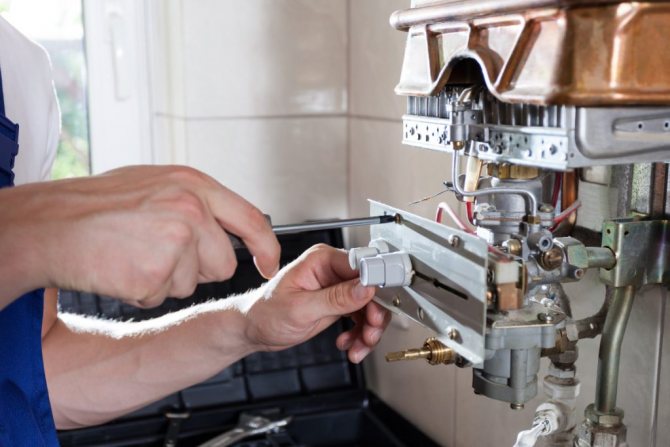

This device is very similar to a thermostat and performs a similar function, but it has the ability to program the boiler operation schedule for 24 hours.
A cycle is set in which the temperature level for heating is indicated by time. The cycle is restarted every day. It is possible to connect the device to the boiler by wire or by radio - it depends on the boiler model and its capabilities.
More advanced device. It has broader functions and capabilities for controlling the indoor climate. You can choose either a preset mode or customize it yourself. The cycle is set for a week and, accordingly, repeats on a weekly basis. The most commonly used connection is by radio.
Devices differ in design and color, so you can choose a programmer to suit your taste and interior, which is also a small but pleasant plus.
Read next: Hotpoint Ariston dishwashers TOP of the best models
Such control devices can be, for example, mechanized or completely mechanical, that is, they do not need electricity, but the regulation of the gas boiler automation is provided partially by a person. Of course, in the full sense of the word, such devices cannot be called automation, but the role of man is here minimized.
All functions of such automation are controlled and ensured through qualitative changes in the details of the device itself under the influence of various temperatures. Oddly enough, with all the variety, convenience and simplicity of electronics, many people decide to use mechanical devices.
Perhaps the price plays a special role here, which is several times lower, but more importantly, such devices should not be afraid of a power outage, any drops in the power grid and do not need additional accessories, for example, a voltage stabilizer.
The principle of operation is the simplest: a person sets the required temperature on his own, using a regulator with a graduated scale. There is a thermocouple inside the boiler, which lengthens when heated and shrinks when cooled. The thermocouple, which is a rod, thereby acts on the internal valve of the boiler and regulates the gas supply. For example, a draft sensor, which is installed in a smoke hood, can work according to approximately the same principle.
According to all regulatory documents, any automation equipment for gas boilers and installations must stop their operation and stop the fuel supply in various potentially dangerous situations:
- The flame in the igniter is extinguished
- High pressure in the pipeline
- On the contrary, the pressure in the pipeline is too low
- Low draft in the chimney
These episodes can lead to a strong gas contamination of the room, which is very dangerous.Therefore, safety automation must be installed on all boilers, both new (already built in advance) and old (by additional installation). Sometimes it is easier and cheaper to buy a new boiler, with already built-in automation, than to install the system on old models.
The main types of solenoid valves
- Electromagnetic shut-off valve for use on pipelines through which only liquid media or gases are transported. This equipment operates as part of air conditioning, ventilation, oil products, gas and water vapor systems.
- Pneumatically actuated valves.
- Explosion-proof and intrinsically safe valves.
- Devices for controlling pneumatic drives
- Special purpose valves (solenoid solenoid valve that work with cryogenic working media, gas stations, vacuum units).
- Electropneumatic valves.
The manufacturers presented today create solenoid valves of a normally closed design. In the presence of a manual cocking of the shutter, an automatic overlap occurs, which is triggered when a signal arrives on the coil (electromagnet). All fuel solenoid valves are a tool for increasing the safety of the facility, since in the presence of malfunctions and the operation of the equipment, it is necessary to assemble.
Our company is actively working on the design and development of new modifications of solenoid valves. Call us, contact us, we are always ready to provide detailed advice on all your questions.
A shut-off device that is used in LPG and allows you to shut off the gas supply while stationary or while the car is running on gasoline (or diesel).
HBO - gas equipment, is installed in the car and makes it possible to choose what fuel to drive on: gas or gasoline (diesel). Gasoline is becoming more expensive day by day, and the number of gas filling stations is growing, and new modified LPG systems appear, improvements of which make it possible to save money and be confident in the safety of oneself, passengers and cars.
The gas solenoid valve is also designed to purify gas from impurities using a filter, it is controlled both in manual and automatic modes (switching from gas to petrol and vice versa).
Three ways to check the functionality of a thermal relay
Sometimes it happens that a faulty sensor is to blame for frequent shutdowns, and the smoke exhaust system is in perfect order. Consider the methods of how to check the gas boiler draft sensor:
- In the place where the sensor is located, you should install a mirror and check if it fogs up during operation. If the surface remains clean, then the sensor is working. If the mirror is fogged up, the sensor is broken.
- Partially cover the chimney with a damper. If the sensor is OK, the boiler will shut down.
Some users are interested in how to turn off the draft sensor in a gas boiler in order to get rid of the frequent on / off switching of the unit. But this cannot be done, otherwise you will increase the danger of your device and put your household at risk. If you turn off the draft sensor, then the automation will not be able to fix malfunctions in the smoke exhaust system and poisonous gases will begin to flow into the living room.
A damaged sensor should be replaced immediately with a new one. On sale you can find devices from different manufacturers. It is forbidden to operate a gas boiler without a sensor and is dangerous to life.
Sometimes the heat supply is cut off too often without external reasons, and then you should make sure that the device is working properly. This can be done in several ways:
- A mirror is attached at the level of the thermal relay, and the system starts up. During the operation of the equipment, it should not fog up.
- You may not completely block the chimney: if everything is working as it should, then the system should immediately automatically shut down.
- If the controller turns off when the hot water supply mode is turned on without heating and the tap is open, the problem lies in the thermal relay.
In certain cases, the sensor can periodically turn off by itself, and such a malfunction must be eliminated as soon as possible: in an emergency, the security system will not work correctly, and waste can enter the house. In order to avoid emergencies, it is necessary to regularly check the correct operation of the equipment, and only professionals should install it: a sensor installed at the wrong level or without taking into account the specifics of the design will not be able to warn about the danger in time.
Changing the boiler draft sensor may be required if there are serious irregularities in the operation of the heating equipment. That is, if the boiler turns off constantly, although there are no serious problems in the chimney and all other components of the system. Or if the controller works, but about 25 minutes after starting it turns off. But the next start usually happens only after the sensor has completely cooled down. And it is for this reason that the boiler draft sensor will not be superfluous. This can be done in three ways. In the first case, a mirror is installed in the place where the sensor is fixed. It should not fog up while the device is in operation. If this is not the case, something is wrong with the system.
Another way is to check the flue gas sensor. To do this, it is necessary to cover the chimney with a damper, but this must not be done completely. If everything is fine with the system, then the boiler should turn off at the same moment.
The third way of checking is that the double-circuit version is transferred to hot water supply mode, but without heating support. After that, the tap opens to full. If the controller turns off in this mode, then it is likely that there are some problems with the traction sensor.
To understand that it is necessary to replace the sensor, and it does not matter which one - draft, flow, water pressure, the following signs indicate:
- the boiler constantly turns off, despite the absence of any apparent reason for this;
- the heat generator stops working half an hour after the start of operation and it cannot be restarted until it cools down.
If the controller itself is working perfectly well, then it makes sense to check if everything is in order with the thrust. Also, shutdowns can be observed in cases where there are failures in the operation of the automation. It should be said right away that if there are any deviations, you should not try to carry out the repair yourself. The best solution would be to call a gas service specialist at home. He has experience in repairing such devices, and he will definitely be able to quickly and efficiently eliminate the breakdown in the shortest possible time.
At first glance, it may seem that choosing a sensor for a gas boiler is very simple. To some extent, this is true. But this should not be taken as something simple, which should not be paid special attention to. Since it is the sensor that will be the protection system that, in the event of a malfunction, will be able to prevent trouble and turn off the boiler almost immediately as soon as problems arise.
Read more: The device and principle of operation of a self-priming pump for water »Aqua-Repair
The same goes for checking this type of technique. It is imperative that the sensor should be checked, even just to make sure that it is completely functional. For this reason, special attention should be paid to the selection process of such a meter and the process of its verification.
See below about draft sensors for mounted boilers.
Diagnostics of errors of the smoke exhaust system of traditional gas boilers
One of the most popular mistakes that the user of a gas boiler encounters is the error of the combustion products removal system.If the normal flow of combustion air cannot be ensured into the combustion chamber and the combustion products cannot be removed normally, then for safety reasons the operation of the boiler must be blocked!
Sometimes the problems that arise may not be significant, and are eliminated by the user on his own. In this article, we will consider the most common cases of such problems and ways to eliminate them. It should be noted that the recommendations will be valid for most household gas boilers, but if the user has only a superficial understanding of the principles of the gas installation, it is advisable to use the services of a specialist with appropriate qualifications.
So, mainly boilers are atmospheric - where combustion products are removed due to natural draft and turbocharged, where a fan is used to remove flue gases. Therefore, first of all, you need to figure out which version is your boiler and which chimney system is used. The principles of traction control and, accordingly, troubleshooting will differ.
In the atmospheric version of the gas boiler (with an open combustion chamber), combustion air is drawn from the room. That is why for such boilers it is necessary to ensure a normal air flow in the place where it is installed. To control the draft in such boilers, a safety thermostat is often used.
In atmospheric boilers, a draft stabilizer is used - this is a boiler structural element located above the burner, which is needed to ensure stable combustion and metered supply of secondary air. A safety thermostat is located on this stabilizer and reacts to temperature. If, during the combustion of a gas boiler, the draft has tilted (air from the chimney goes into the room, and not vice versa), the sensor will inevitably be heated by the exhaust gases and the boiler will be stopped.
Problems with fume extraction in atmospheric boilers can be associated with design errors, a clogged chimney, a lack of normal air flow, or the operation of exhaust devices. The use of such boilers in the area of operation of additional exhaust devices is in principle not permitted.
To summarize, to diagnose a malfunction of the atmospheric version of the boiler in case of a draft error, it is required:
- Make sure that the air flow in the room and in the boiler is not blocked - the boiler is not overgrown with dust.
- With the equipment turned off, check that there is a natural draft in the chimney and it is directed out of the room. Experts can measure the amount of thrust accurately with a device (special holes are provided in the boilers), the user can only “by eye”, by sensations, with a burning match or a strip of paper, etc. Often, boiler owners are convinced in advance that everything is in order with the draft! The probability of a malfunction of the control board for a thrust error is close to zero! The reasons for blocking the chimney can be different: birds, spiders, dirt, ice, etc.
- Checking the serviceability of the thermostat (traction control sensor). The procedure for most boilers is described above. The sensor in most cases is a bimetallic plate and has two positions: closed and open.
In a boiler equipped with a fan for removing combustion products, ensuring the safety of work is somewhat more difficult. The thrust is checked by an external device - pneumatic relay. A device for measuring the air flow rate (Venturi device or Pitot tube) is also installed in the chimney, which is connected to the pneumatic relay through plastic tubes.
That is, in this case, the principle of traction control is as follows: if the air flow generated by the fan in the exhaust pipeline is greater than the minimum value to which the pneumatic relay is set, then the relay contacts close and the board gives a signal for ignition, if the air flow is less (the thrust is not sufficient) - contacts open and the boiler will be stopped.
The inlet pipeline is a pipe through which air enters the combustion chamber (in a turbocharged boiler, it is closed). If, for example, the head of the pipe is covered with frost in winter, there will be no inflow, while the fan is typically quieter - the boiler will not start. Provided that everything is in order with the exhaust pipe and there are no other problems - if you open the combustion chamber, the boiler will start up normally.
The fan operation can be assessed visually (the blades are visible without dismantling). If the fan does not start when the boiler is turned on, then in most cases either no signal is received from the board (the board is faulty), or the fan itself is faulty. Damage to wiring is rare but rare. Service workers check the performance of the fan by directly applying voltage to it. If the fan works, it is most likely that diagnostics and repair of the control board will be required.
If the fan turns on and air enters the combustion chamber normally, but the boiler does not start due to a smoke exhaust error, you need to check whether the pneumatic relay works. You can check that the relay is triggered visually (the relay emits a characteristic click), and even better with a tester - check the closure of the contacts in the wiring, because the relay can work, but for some reason the signal does not reach the control board.
If the pneumatic relay does not work, you need to make sure that there is no pollution or condensation in the supply pipes, they are not damaged. Alternatively, you can independently create a vacuum in the supply tube and make sure that the relay is activated. If it does not work, it is likely that it is defective and must be replaced (in most cases they are not collapsible and cannot be repaired).
In the event that the relay is forcibly triggered, but normally, when the boiler is started, it does not, then the Venturi (or Pitot) device should be inspected for damage or contamination. The slightest deformation or contamination can lead to malfunction.
Since the Venturi device is located in the exhaust pipe, it could be deformed by the high temperature of the exhaust gases.
Problems with the outlet pipeline can be the same as with the inlet, but you can make sure that there is no blockage, perhaps, only visually or, by measuring, the actual discharge by the device through specially provided control holes.
The air flow monitor is installed inside the exhaust pipe. There is a possibility of heat damage (tube deformation) or contamination.
In some modern boilers, fans with a variable speed can be installed, which is set in the settings depending on the type of chimney used and its length (for example, in some Buderus and Ariston models). Therefore, it will not be superfluous to study the instruction manual for the equipment, since in practice there have been cases when incorrect configuration of the board was the source of the problem.
Read more: Do-it-yourself water heating of a private house: diagrams and tips
This article describes the most common and obvious causes of malfunctions in gas boilers associated with the removal of combustion products. Different boilers can be equipped with different control schemes - we have considered the most popular ones.
We also draw your attention to the fact that it is unacceptable to disable control devices - all of them are provided for the safe operation of the equipment. If there is a problem, you need to fix it!
Types and differences
There is a main division of all models of solenoid valves into three groups:
- Normally open (NO). Devices of this group, when the voltage is disconnected, remain in the open position and provide free flow of gas.
- Normally closed (NC). Solenoid valves without an electric current are closed and shut off the free flow of gas in the gas system.
- Universal.This type of gas valves can be either closed or open when the voltage is cut off.
It is worth noting that electromagnetic gas valves can also be divided according to the principle of gate movement:
- Direct action. This assumes that the shutter is only activated when the core moves.
- Indirect action. When the shutter starts to move not only under the influence of the core, but also with the help of gas. It is advantageous to buy an electromagnetic valve for gas of this type if a large flow is expected, because it saves the efforts of the system.
By the number of moves there are:
- Two-way solenoid valves. They have only two holes: inlet and outlet. This type of device is best used when only supplying or shutting off gas to the system is required.
- Three-way valves. They have three holes: one inlet and two outlets. Its advantage is that it is possible to redirect the gas flow on the system.
- Four-way solenoid valves. They have four holes: one inlet and three outlets. The advantage here is not only the ability to redistribute the gas flow, but also to connect to additional systems.
Before buying a Lovato VH series magnetic gas valve, it is worth discussing where this device will be used and what characteristics it should have.
You should pay attention to conditions such as:
- Electrical service. It is best to choose models with additional manual adjustment, or intrinsically safe with low power.
- Pipeline pressure. Do not select a valve with a pressure rating that exceeds the line pressure. This could damage the mechanism.
- Environment. Check the rating of the valve and ensure that the product can be operated under existing conditions. This is relevant when the room where the mechanism will be installed is expected to have high humidity, vibration, high (or vice versa - low) temperature, direct sunlight or any other parameters that are different from the norm.
- Required voltage. It is worth checking the power supply for a steady voltage. It uses a 220V gas solenoid valve, and if the voltage is lower, it will lead to the mechanism not being able to open and close normally. And with increased voltage, the device will overheat. On the gas equipment of cars, this is also important - then a 12 volt gas solenoid valve is installed.
The price of a gas solenoid valve will vary by type, size and application.
The solenoid valve for the gas column depends on the model of the column) will cost from $ 4 to $ 10. And the Lovato magnetic gas valve for a car is from $ 10 to $ 15.
Devices that are not used for the domestic sphere are significantly more expensive. Let's also give a couple of examples.
A gas solenoid valve of the KGEZ type, depending on the configuration, will cost about $ 20-25.
The BH series solenoid valve for a gas gun will cost $ 43.
Product overview (video)
Purpose of the draft sensor
To better understand how the speaker works and why it turns off, you need to study the principle of its components. One of the main parts of such a device is the thrust sensor.
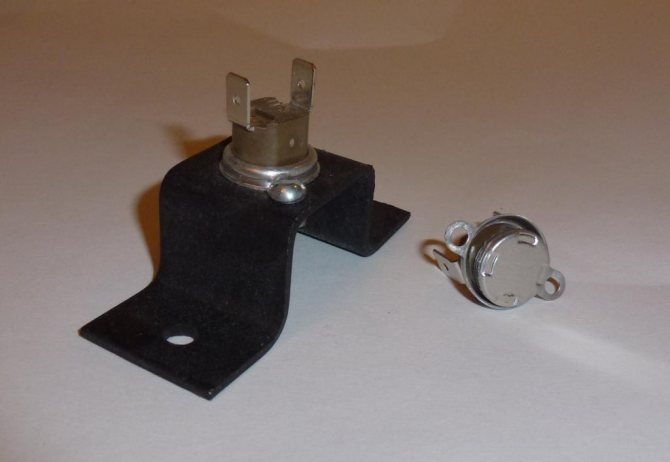

A draft sensor or thermal relay is a device for determining the intensity of draft in the chimney of a gas boiler
A draft sensor or thermal relay detects the draft force in the gas boiler. It is he who gives the signal that the column thrust has crossed the permissible limits.
In addition to the function of ensuring the removal of combustion products outside, the thrust is also responsible for the normal combustion of gas. If the gas in the column does not burn, then an expensive device may break.
Insufficient draft can cause the column to fade, so if you have such a problem, first of all, check the draft in the boiler. It is this indicator that is the most common reason for the malfunctioning of the column.
It is the draft sensor that helps to choose the wrong operation of the boiler in time and eliminate its causes. Without this element, the safety of the operation of such a device will not be complete.
How the draft sensor works in a gas boiler
Traction sensors can have different structures. It depends on what kind of boiler they are installed in.


The function of the draft sensor is to generate a signal when the draft in the boiler deteriorates.
There are currently two types of gas boilers. The first is a natural draft boiler, the second is a forced one.
Types of sensors in boilers of different types:
- If you have a natural draft boiler, then you may have noticed that the combustion chamber there is open. The draft in such devices is equipped with the correct dimensions of the chimney. Draft sensors in boilers with an open combustion chamber are made on the basis of a biometallic element. This device is a metal plate to which a contact is attached. It is installed in the gas path of the boiler and responds to temperature changes. With good draft, the temperature in the boiler remains low enough and the plate does not react in any way. If the draft becomes too low, the temperature inside the boiler will rise and the metal of the sensor will begin to expand. Having reached a certain temperature, the contact will fall behind and the gas valve will close. When the cause of the breakdown has been eliminated, the gas valve will return to its normal position.
- Those with forced draft boilers should have noticed that the combustion chamber in them is of a closed type. The draft in such boilers is created due to the operation of the fan. A thrust sensor in the form of a pneumatic relay is installed in such devices. He monitors both the operation of the fan and the speed of the combustion products. Such a sensor is made in the form of a membrane that sags under the influence of flue gases that arise during normal draft. If the flow becomes too weak, the diaphragm stops bending, the contacts open and the gas valve closes.
Draft sensors ensure normal boiler operation. In natural combustion boilers, with insufficient draft, symptoms of reverse draft may be observed. With such a problem, the combustion products do not go outside through the chimney, but return back to the apartment.
There are a number of reasons why a draft sensor may be triggered. By removing them, you will ensure normal operation of the boiler.
What can trigger the traction sensor:
- Due to a clogged chimney;
- In case of incorrect calculation of the dimensions of the chimney or its incorrect installation.
- If the gas boiler itself was installed incorrectly;
- When a fan has been installed in the forced draft boiler.
When the sensor is triggered, it is urgent to find and eliminate the cause of the breakdown. However, do not try to forcibly close the contacts, this can not only lead to failure of the device, but also dangerous to your life.
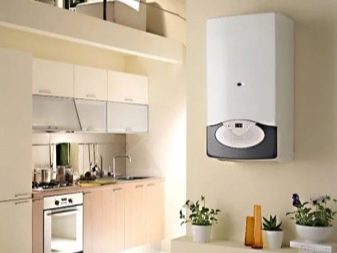

The gas sensor protects the boiler from damage. For a better analysis, you can purchase an air gas analyzer, it will immediately report the problem, which will allow you to quickly fix it.
Overheating of the boiler threatens the entry of combustion products into the room. What can have a negative impact on the health of you and your loved ones.
What is overheating sensor
In addition to the draft sensor, there is also an overheating sensor. It is a device that protects the water heated by the boiler from boiling, which occurs when the temperature rises above 100 degrees Celsius.
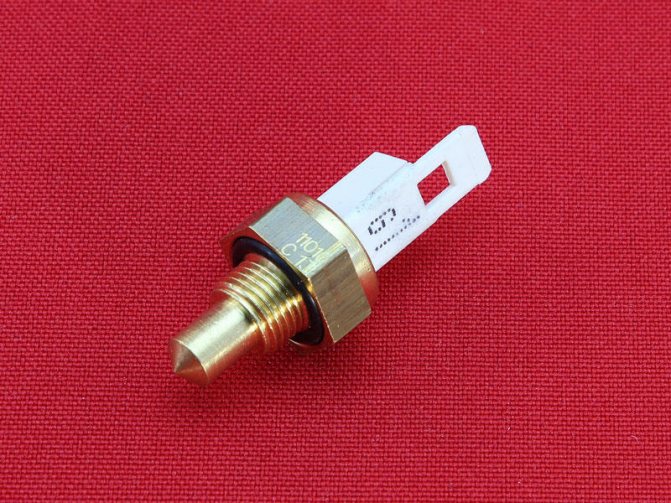

Temperature sensors for the boiler are one of the auxiliary elements of automation for controlling the heating system, which allows you to determine the temperature of the environment
When triggered, such a device turns off the boiler.The overheating sensor only works properly if installed correctly. An increase in the temperature of the water without this device would threaten the failure of the gas boiler.
An overheating sensor monitors the temperature rise in the heating circuit. It is installed at the outlet of the heating circuit heat exchanger. When the critical temperature is reached, it opens the contacts and turns off the boiler.
Reasons for triggering the overheating sensor:
- Such a device can work if the water in the column is too hot;
- With poor sensor contact;
- Due to its malfunction;
- If the sensor has poor contact with the pipe.
In order to make the heating sensor more sensitive, a heat-conducting paste is used. In case of overheating, the sensor blocks the operation of the boiler. Modern devices are capable of indicating a breakdown code on the display.
The principle of operation of the solenoid valve
In the absence of voltage, the return spring holds the gate in a certain position (the channel is closed). When voltage is applied, the gate core retracts and the gate opens.
For the correct and satisfactory operation of the machine with HBO, we advise you to periodically go through the necessary maintenance inspections and replacement of the gas solenoid valve.
Our company offers to buy gas solenoid valves from leading manufacturers at a reasonable price (enter the names of the companies). We are confident in the quality of the products we offer.
